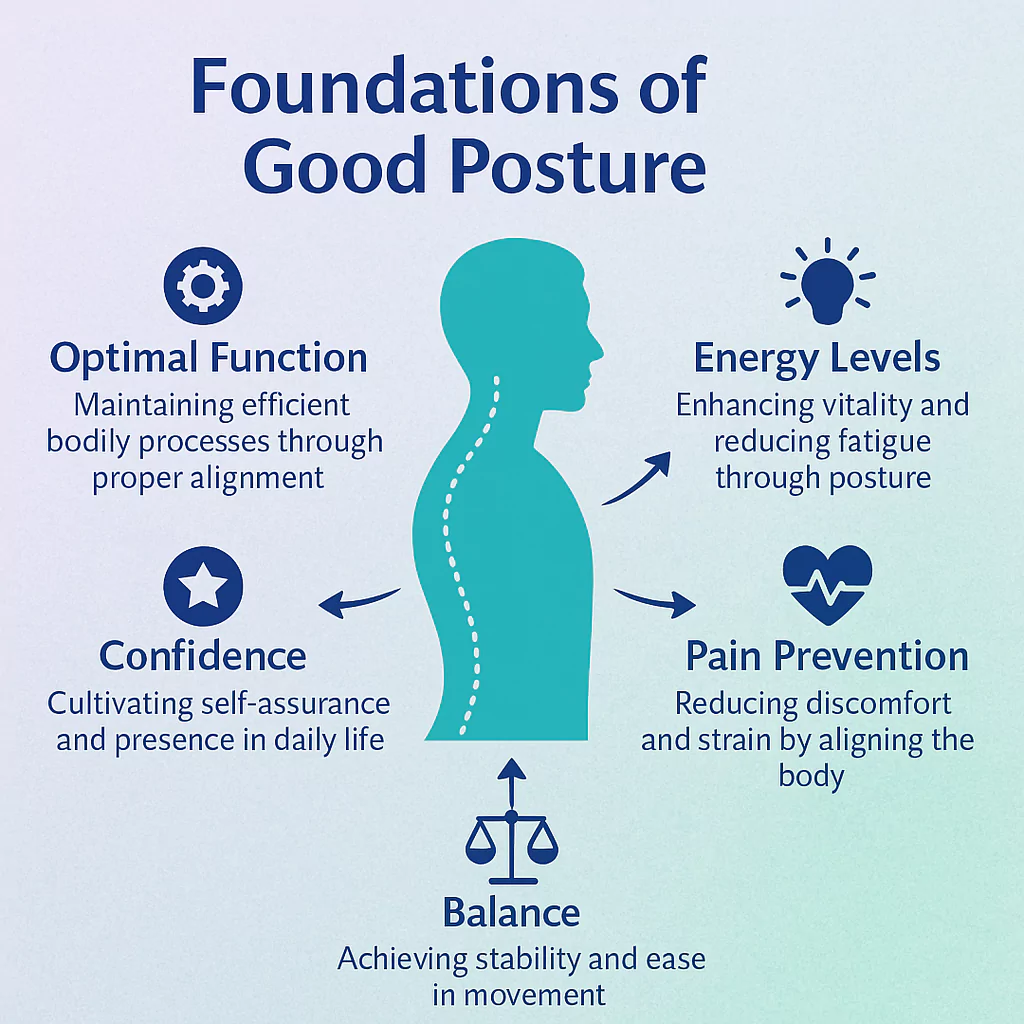Why is good posture important in yoga therapy?
Good posture is the foundation of a healthy body and mind. It helps maintain optimal function, improves energy levels, enhances confidence, and prevents pain or discomfort. In yoga therapy, posture plays a key role in balancing stability (Sthira) and ease (Sukha)—allowing the body to move efficiently without strain.
How does posture affect joint health and movement?
When posture is aligned correctly, deep stabilizing muscles engage to support the joints, reducing unnecessary strain. This prevents muscular imbalances, allowing pain-free movement.
Yoga Insight: Sthira Sukham Asanam (Yoga Sutra 2.46) — “A posture should be steady and comfortable.” Good posture isn’t about stiffness; it’s about finding balance between strength and relaxation.
Can posture really improve breathing and energy levels?
Yes! A well-aligned spine and open ribcage create more space for the lungs, allowing deeper and fuller breaths. This:
Enhances oxygen intake, boosting vitality.
Supports cellular function and energy levels.
Reduces stress by activating the parasympathetic nervous system (relaxation response).
When we let go of unnecessary tension, posture and breath flow naturally.


